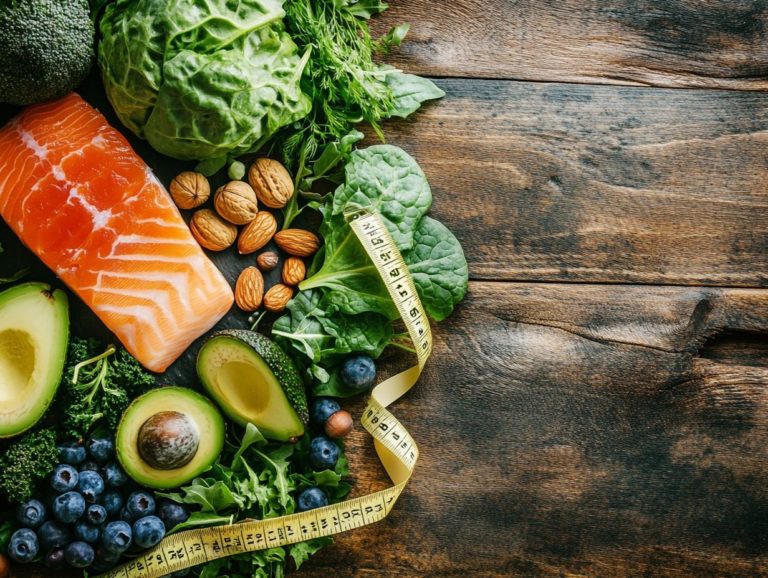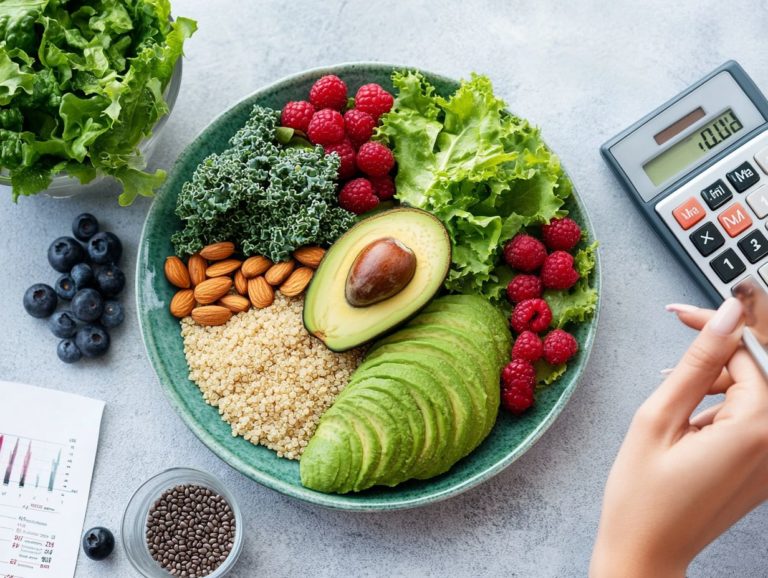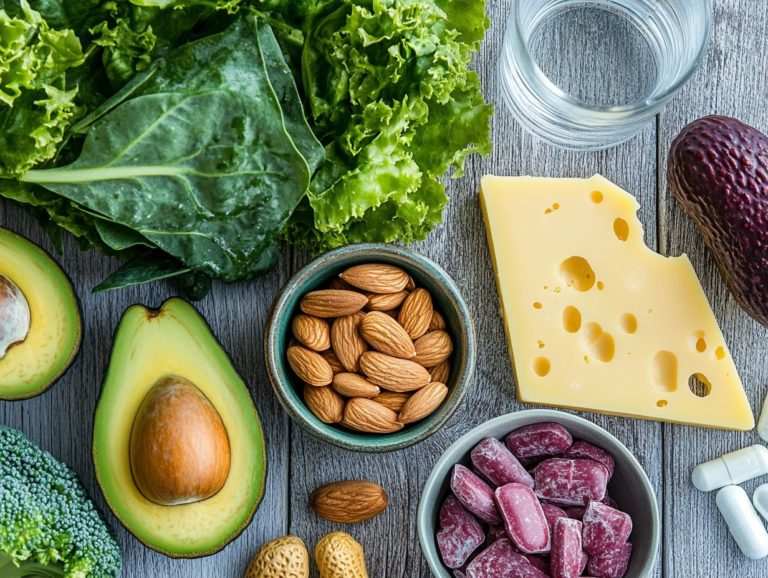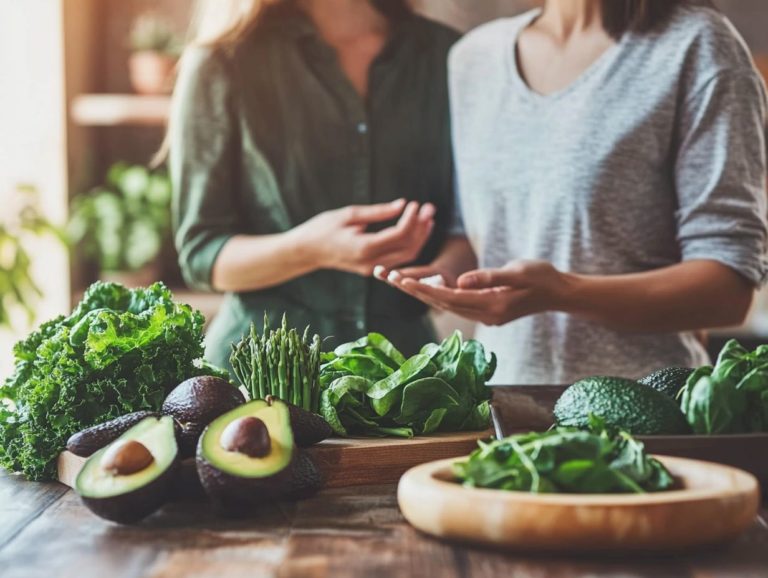Understanding Food Quality on Keto
Contents
- Understanding Food Quality on Keto
- Key Takeaways:
- What is Food Quality?
- 2. Source of Food
- 3. Processing Methods
- What Are the Best Foods for Keto?
- What Foods Should Be Avoided on Keto?
- How Can You Identify High-Quality Foods on Keto?
- 2. Choosing Whole Foods
- 3. Researching Brands
- How Can You Incorporate High-Quality Foods into Your Keto Diet?
- 3. Trying New Recipes
- Frequently Asked Questions
- What is the keto diet and how does it relate to food quality?
- What are some examples of high-quality food on the keto diet?
- How can I ensure I am choosing high-quality foods on the keto diet?
- Can I still eat processed foods on the keto diet?
- Are there any foods that should be avoided on the keto diet?
- Can I still eat out while following the keto diet and maintaining food quality?
Understanding Food Quality on Keto
When you embark on a ketogenic journey, it is essential to grasp the importance of food quality. This understanding is vital for reaching your health goals and sustaining well-being.
This exploration delves into the key components of food quality, emphasizing nutrient density, sourcing, and processing methods. You ll discover the best foods to incorporate into your keto diet think healthy fats and high-quality proteins while also learning which items to steer clear of, such as processed foods, high-carb options, and those that spike insulin levels.
You’ll find valuable tips on how to identify and integrate high-quality foods into your meals. This ensures that your keto experience is not only nourishing but also thoroughly enjoyable. Understanding the nutrition information on food labels will help you make better choices.
Key Takeaways:
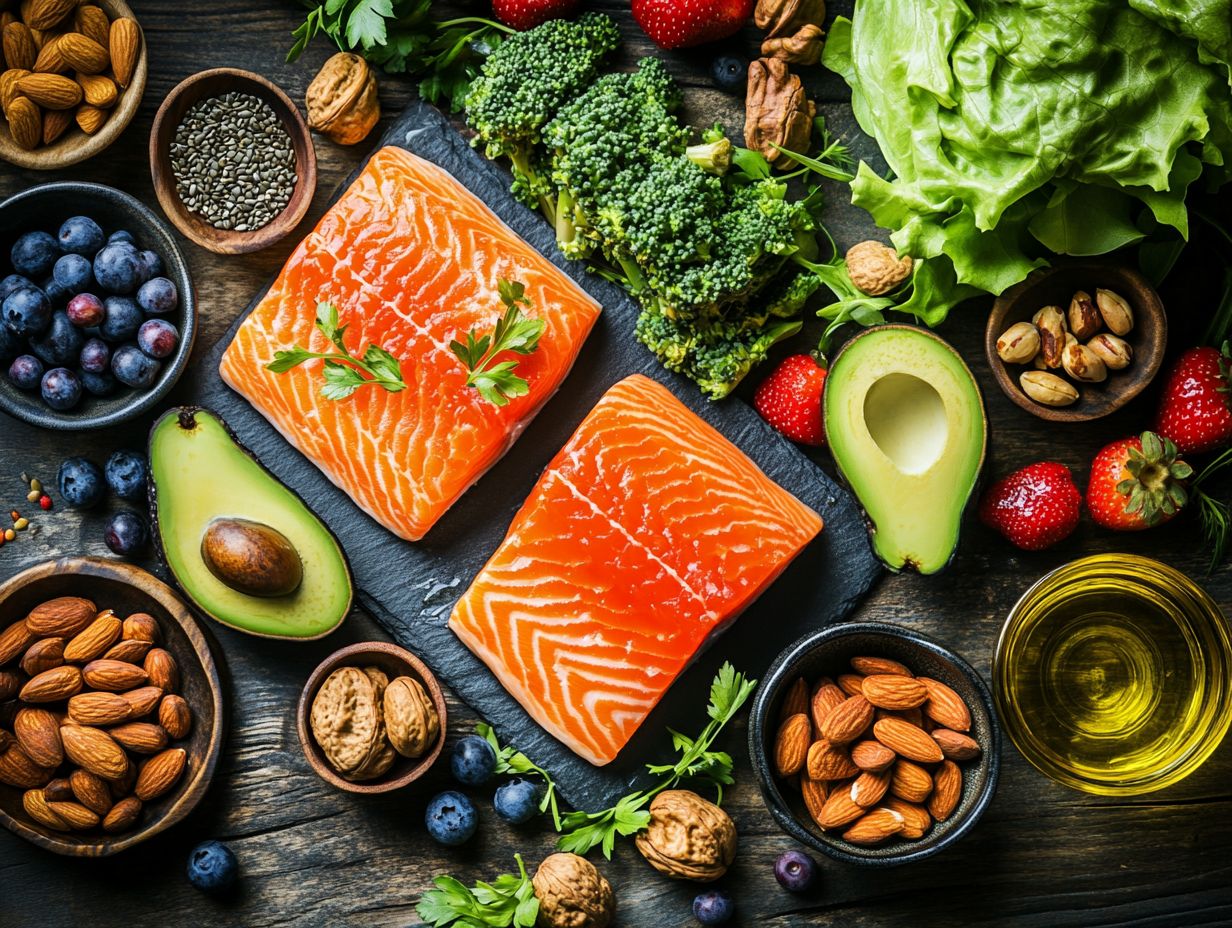
- Choose foods with high nutrient density to ensure you are getting essential vitamins and minerals on keto.
- Prioritize healthy fats, high-quality proteins, non-starchy vegetables, and low-sugar fruits for a well-rounded and sustainable keto diet.
- Avoid processed foods, high-carb foods, and artificial sweeteners to maintain the high-quality standards of your keto diet. Be mindful of your carbohydrate intake and how it affects your blood sugar levels.
What is Food Quality?
Food quality is a crucial concept that underscores the significance of the nutritional value of the foods you choose, especially when adhering to health-conscious diets such as the ketogenic diet. This low-carbohydrate diet is designed to optimize your metabolic state by focusing on nutrient-dense foods.
To fully grasp food quality, it s essential to evaluate nutrient density, which measures the amount of vital nutrients you re getting per calorie and how this influences your overall health and wellness.
When food boasts higher nutrient density, it means those items are packed with vitamins, minerals, and dietary fiber, while minimizing empty calories. This approach not only supports effective weight management strategies but also fosters beneficial metabolic changes.
1. Nutrient Density
Nutrient density is crucial when it comes to understanding the health benefits of your food choices, especially if you’re following a ketogenic diet where every calorie you consume plays a vital role in achieving a balanced intake of fats, proteins, and carbohydrates.
This concept revolves around the amount of essential nutrients think vitamins, minerals, and dietary fiber in relation to the calorie content of your foods. By prioritizing nutrient-dense options, you can elevate your dietary intake without piling on unnecessary calories.
Incorporating high-fiber foods like leafy greens and avocados can greatly benefit your gut health and help regulate appetite hormones, which is key for maintaining that feeling of fullness and avoiding overeating. Nutrient-dense foods are associated with better metabolic responses, aiding in improved blood sugar control and energy balance. This is crucial for managing ketosis symptoms and supporting your overall health benefits.
Taking a closer look at options like fatty fish, nuts, and cruciferous vegetables showcases how these selections not only nourish your body but also fit seamlessly into low-carb dietary strategies. These foods help maintain stable glucose levels and support long-term metabolic changes.
Ready to elevate your keto journey? Start exploring nutrient-dense options today and transform your meals!
2. Source of Food
The source of your food is pivotal in determining its quality. It influences not just the nutrient content but also the overall health benefits tied to your dietary choices, particularly in carbohydrate-restricted diets like the ketogenic diet.
It’s essential to differentiate between whole foods and processed foods. Whole foods, such as fresh vegetables, lean meats, and healthy fats, provide a wealth of essential vitamins and minerals that their processed counterparts often lack. If you’re following a ketogenic diet, incorporating foods like avocados, nuts, and non-starchy vegetables will help you achieve your weight loss goals. These choices follow the principles of limiting carbohydrates and support your overall dietary habits while maintaining stable insulin levels.
Processed foods can introduce unwanted sugars and unhealthy fats, potentially causing insulin spikes that undermine the fundamental objectives of the ketogenic approach. By understanding where your food comes from, you empower yourself to make informed dietary choices that can significantly enhance your health outcomes.
3. Processing Methods
The methods you use to process food can significantly impact its quality, altering the nutritional value and potentially leading to deficiencies something that’s especially important to keep in mind if you’re following a ketogenic diet.
Techniques like refining, enriching, and fortifying play critical roles in determining the overall nutrient density of food products. For example, refining often strips away beneficial components such as fiber and essential vitamins. Enriching can help restore some nutrients lost during processing. Fortifying, on the other hand, involves adding vitamins or minerals that may not naturally occur in certain foods, enhancing their nutritional value.
Understanding these processes is essential for making informed decisions that align with dietary restrictions and ketogenic resources. These processing methods not only influence your dietary choices but can also have lasting effects on your long-term health. Understanding how these processes can transform the health benefits of the foods you consume empowers you to make informed decisions that support your well-being.
This knowledge is particularly important for those with medical conditions that require careful attention to nutrient deficiencies and overall food quality.
What Are the Best Foods for Keto?
Selecting the finest foods for a ketogenic diet is crucial for successfully attaining a metabolic state of ketosis. In this state, your body shifts its reliance from glucose to ketone bodies as the primary energy source.
This transition requires you to make thoughtful choices, prioritizing high-fat and low-carbohydrate options to optimize your dietary success.
1. Healthy Fats
Healthy fats serve as the cornerstone of the ketogenic diet, providing you with the primary source of energy while helping to maintain balanced insulin levels and supporting overall metabolic changes. These dietary fats are crucial for achieving a state of ketosis and optimizing your weight-loss strategy.
These fats not only aid in efficiently burning stored body fat for fuel but also play a critical role in appetite suppression, making it easier for you to manage cravings and feel satisfied. On a keto diet, it s essential to incorporate healthy fats such as avocados, olives, nuts, and seeds, which are rich in monounsaturated and polyunsaturated fats. These types of fats are more beneficial than saturated fats, as they contribute to heart health and improve your cholesterol levels.
Being mindful of your dietary fats helps prevent weight regain and support long-term success. By focusing on these nutritious options, you can optimize your weight loss journey while enjoying a varied and delicious menu.
Start incorporating these foods today to kickstart your keto journey!
2. High-Quality Proteins
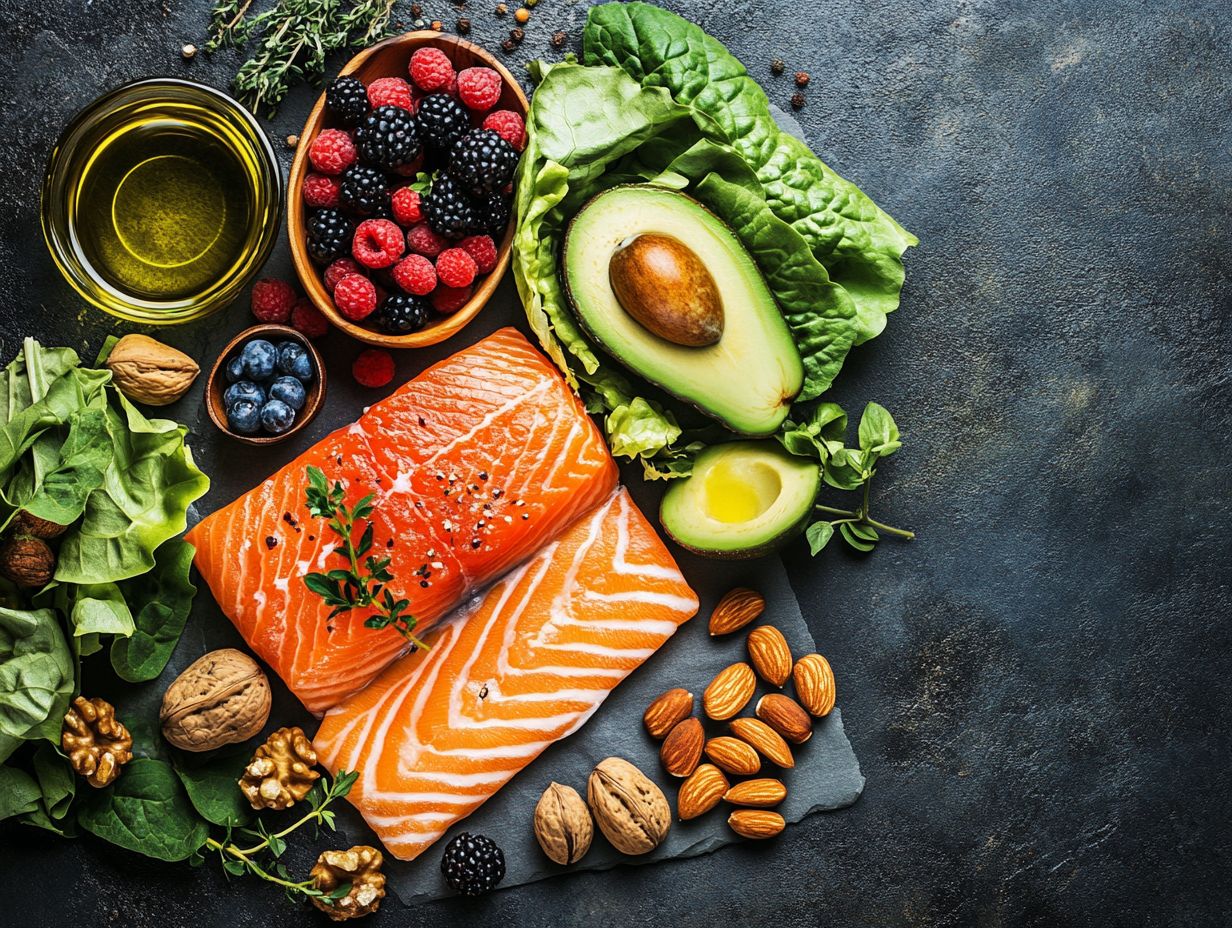
High-quality proteins are essential in a ketogenic diet. They provide the necessary amino acids that support muscle maintenance and overall well-being. These proteins play a pivotal role in weight loss and appetite regulation.
Not only do these proteins help you preserve lean body mass, but they also enhance satiety. This can effectively curb pesky cravings for carbohydrates. With an array of options like grass-fed beef, wild-caught fish, and organic poultry at your disposal, you can indulge in proteins rich in essential nutrients while steering clear of inflammatory additives.
Protein intake should be monitored to ensure it aligns with your overall ketogenic plan and supports your dietary habits. Incorporating plant-based proteins such as nuts, seeds, and low-carb legumes can further diversify your nutrient intake, promoting a well-rounded approach to your dietary needs.
To achieve your protein goals without surpassing carbohydrate limits, meal planning and tracking your intake become crucial strategies. These actions bolster your commitment to the ketogenic lifestyle. Being aware of permitted foods can help you stay on track without compromising your health goals.
3. Non-Starchy Vegetables
Elevate your meals today with non-starchy vegetables in your ketogenic diet. They boost your nutritional value without significantly increasing your carbohydrate intake, making them an essential part of your healthy food choices.
Think of options like spinach, zucchini, kale, and bell peppers these gems are low in calories and bursting with essential vitamins, minerals, and antioxidants. For example, spinach is a powerhouse of vitamin K and iron. Meanwhile, zucchini offers a delightful dose of vitamin C and potassium. Including these in your diet helps meet dietary guidelines and supports effective glucose depletion.
By weaving these vegetables into your meals, perhaps saut ing spinach for your morning omelet or spiralizing zucchini as a creative pasta substitute, you can savor a low-carb diet that is both delicious and nourishing.
The high fiber content in these vegetables not only aids digestion but also helps you feel full. This makes them an excellent choice for maintaining stable energy levels while you navigate your keto lifestyle. These vegetables contribute to your net carbs, ensuring that you stay within your carbohydrate limits.
4. Low-Sugar Fruits
Include low-sugar fruits in your ketogenic diet for a delightful way to satisfy your sweet tooth while keeping your carbohydrate intake in check. This helps support stable blood sugar levels.
These fruits not only curb your cravings for sweetness but also deliver essential vitamins and minerals that enhance your overall health. Consider options like berries, avocados, and lemons. They are low in sugar and packed with antioxidants and fiber, fitting well within the framework of low-carb diets and helping you maintain your metabolic state of ketosis.
Incorporating these fruits into your meals boosts your nutrient intake without causing any spikes in glucose production or insulin levels. This allows you to savor their flavors without guilt. Refer to ketogenic resources for more information on recommended servings and nutrition information to stay on track.
When checking food labels, it’s wise to pay attention to serving sizes. This way, you can enjoy these delicious fruits while maintaining your carb count.
What Foods Should Be Avoided on Keto?
Understanding which foods to avoid on a ketogenic diet is essential for maintaining a successful weight-loss strategy. Certain items can disrupt your metabolic state of ketosis, potentially leading to adverse health effects. By making informed food choices, you can ensure that your journey remains both effective and beneficial for your overall well-being and weight loss.
1. Avoiding Processed Foods
Processed foods often harbor hidden sugars and unhealthy fats. These can be particularly detrimental if you’re following a ketogenic diet or any low-carb diet, potentially leading to nutrient deficiencies.
These foods often contain empty calories, providing little in terms of nutritional value. This can disrupt your healthy eating habits and contribute to weight gain. While the convenience of processed options may tempt you to overlook fresh ingredients, it can also diminish your overall dietary diversity.
Recognizing the importance of scrutinizing food labels is a game changer! By doing so, you can spot harmful additives, preservatives, and processed ingredients that might undermine your dietary goals. Staying informed about what you consume allows you to make better choices that align with your health objectives and steer clear of the pitfalls associated with overly processed foods.
2. Steering Clear of High-Carb Foods
On a ketogenic diet, you ll want to avoid high-carb foods, as they can elevate insulin levels and disrupt your body’s ability to enter ketosis, leading to unwanted ketosis symptoms.
Foods like bread, pasta, and sugary snacks are notorious for their high carbohydrate content. When you indulge in these, you might experience significant glucose spikes that not only derail your transition into fat-burning mode but also trigger cravings and hunger pangs.
The presence of these high-carb options can make it difficult for you to maintain appetite suppression. This tempts you to snack on lower-quality foods that further complicate your weight loss journey. By limiting these items, you can promote a more stable metabolic state, facilitating a smoother transition into ketosis and ultimately supporting better weight management and overall well-being.
3. Understanding the Challenges of Artificial Sweeteners
Artificial sweeteners can present challenges for you while on a ketogenic diet. They potentially affect your glucose levels and complicate your weight loss efforts and metabolic changes.
These sugar substitutes, often seen as a guilt-free way to indulge your sweet tooth, may inadvertently influence your hunger hormones. This can lead to an increased appetite and cravings for more carbohydrates. Research suggests that certain artificial sweeteners can alter insulin responses or disrupt your gut microbiota, raising concerns about their long-term effects on your metabolic health.
For those dedicated to the keto lifestyle, it s essential to discern which sweeteners to incorporate. Opting for those with minimal glycemic impact, such as stevia or erythritol, is a prudent choice. Balancing your use of sweeteners with whole foods can further enhance your nutritional quality and support your overall health.
How Can You Identify High-Quality Foods on Keto?
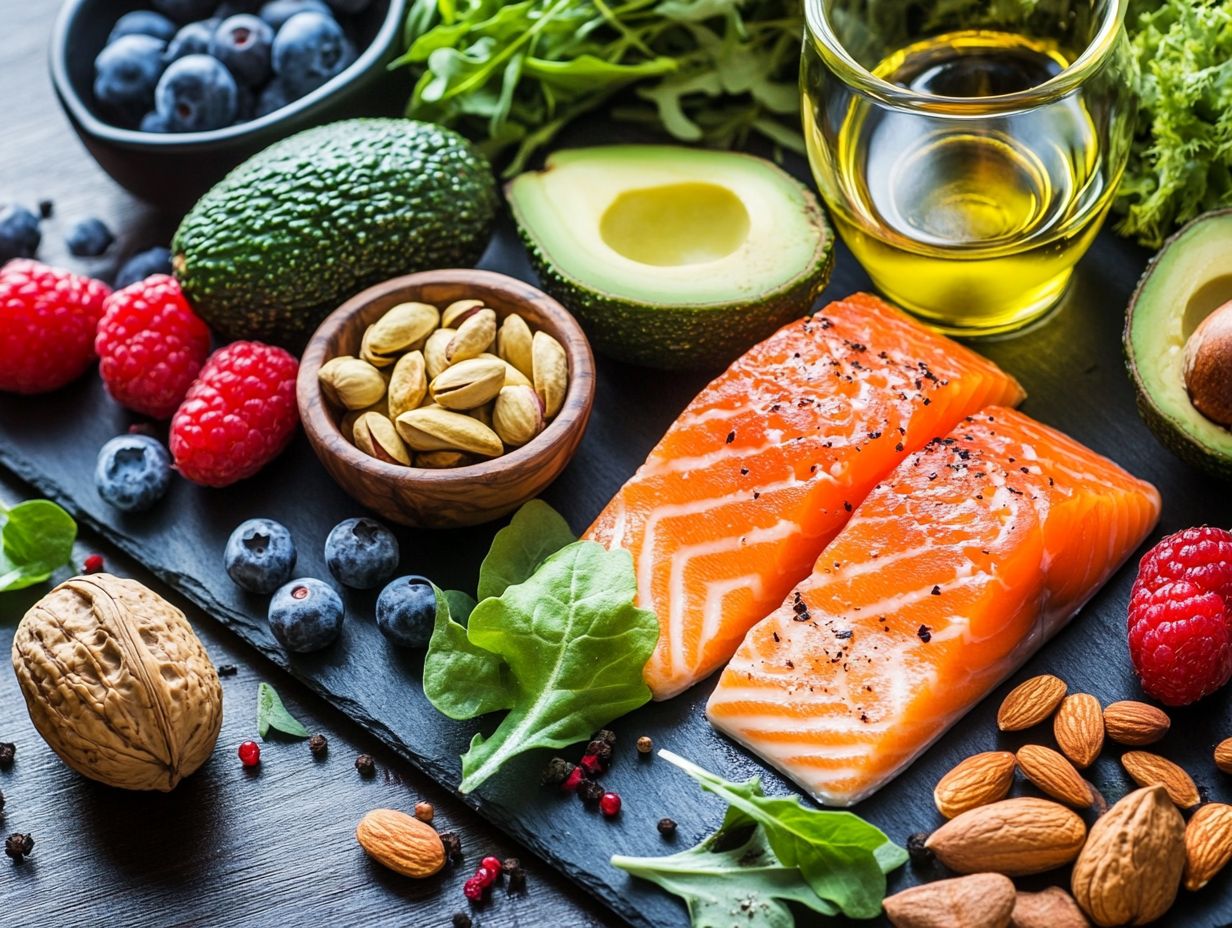
Identifying high-quality foods on a ketogenic diet is crucial for achieving optimal health benefits. This requires a discerning approach take the time to read labels meticulously, select whole foods, and research brands thoroughly. This ensures your choices align with dietary guidelines and contribute to your health goals while ensuring nutrient density.
1. Mastering the Art of Reading Labels
Reading labels is an essential skill when you re following a ketogenic diet. It allows you to evaluate the nutrient content, carbohydrate levels, and high-fat content of various food products.
By taking the time to familiarize yourself with nutritional labels, you can make informed choices that align with your dietary goals. Understanding net carbs is particularly vital, as it reflects the total carbohydrates minus fiber and sugar alcohols, giving you a clearer picture of what truly impacts your blood sugar levels.
Keeping an eye on calorie content helps you balance your overall energy intake, key to preventing overeating. A snack may appear healthy with its low carb count but could be loaded with calories from unhealthy fats, leading to misconceptions about its real value.
Don t overlook ingredient lists; many processed foods hide sugars that can throw your ketogenic plan off course. A common pitfall lies in ‘low-fat‘ products, which often compensate with added sugars, making them less than ideal for anyone striving for ketosis.
2. Choosing Whole Foods
Choosing whole foods is essential for maintaining the quality of your ketogenic diet. They offer higher nutritional value and superior health benefits compared to processed alternatives. This approach ensures better health outcomes while aligning with high-protein diets.
These unprocessed options are packed with essential vitamins, minerals, and healthy fats that are crucial for anyone following a low-carb lifestyle. By prioritizing whole foods, you will meet your nutritional requirements and stay well within your dietary limits.
Incorporating items like leafy greens, avocados, and nuts into your meals supports your body’s functions for energy and health. This also minimizes the risk of deficiencies that can sometimes arise from restrictive diets.
These whole foods also help you feel fuller and boost your energy levels. This makes it easier to stick to ketogenic principles without sacrificing flavor or variety.
3. Researching Brands
Researching brands is essential for discovering high-quality foods that fit perfectly into your ketogenic diet. Ensuring that the products you choose align with both health benefits and dietary guidelines is crucial.
To evaluate food brands, examine their sourcing practices for ingredients. Seek out brands that prioritize transparency, offering clear information about the origins of their ingredients and their processing methods.
This openness signals a genuine dedication to high standards and ensures the purity of their products. Additionally, consider if these brands adhere to dietary guidelines tailored for low-carb diets, as this can enhance the effectiveness of your ketogenic lifestyle.
Engaging with customer reviews and expert analyses also provides valuable insights into the reliability of these brands. This helps you make informed choices for your health journey.
How Can You Incorporate High-Quality Foods into Your Keto Diet?
Incorporating high-quality foods into your ketogenic diet is crucial for unlocking its full health benefits. Achieve this through thoughtful meal planning, embracing home cooking, and exploring new recipes that adhere to ketogenic principles.
By doing so, you’ll elevate your culinary experience and optimize your overall well-being on this journey.
1. Meal Planning
Meal planning is your secret weapon for success on a ketogenic diet! It helps you make balanced food choices that align with your the balance of fats, proteins, and carbohydrates.
By curating a weekly menu, you can seamlessly incorporate healthy fats, proteins, and non-starchy vegetables. This strategy enables you to stick to your carbohydrate restrictions while enjoying satisfying meals.
Begin by selecting a diverse range of protein sources, such as chicken, fish, and plant-based options. Pair them with vibrant vegetables like spinach, zucchini, and bell peppers. Adding healthy fats from sources like olive oil, avocado, or nuts enhances flavors and provides essential nutrients.
With a well-structured meal plan, you will find it easier to make intentional choices that support your overall health without the stress of daily decision-making. This approach helps manage diabetes, epilepsy, and even cancer as discussed in medical conditions.
2. Cooking at Home
Cooking at home allows you to elevate the quality of your meals and ensures they align perfectly with ketogenic principles. This ultimately enhances your health and gives you greater control over what goes into your food.
When you prepare meals in your kitchen, choose fresh, whole ingredients that not only taste superior but also support your nutritional goals.
This approach allows precise management of macronutrient ratios, which is crucial for anyone following a specific eating plan. Home-cooked meals can be tailored to your personal preferences and dietary restrictions, ensuring indulgence in high-quality foods that resonate with your health aspirations.
Regular cooking nurtures your creativity and invites you to experiment with various recipes. This encourages the exploration of diverse flavors while adhering to your nutritional needs and maintaining a healthy metabolic state.
Don’t miss out on the chance to take control of your health!
3. Trying New Recipes
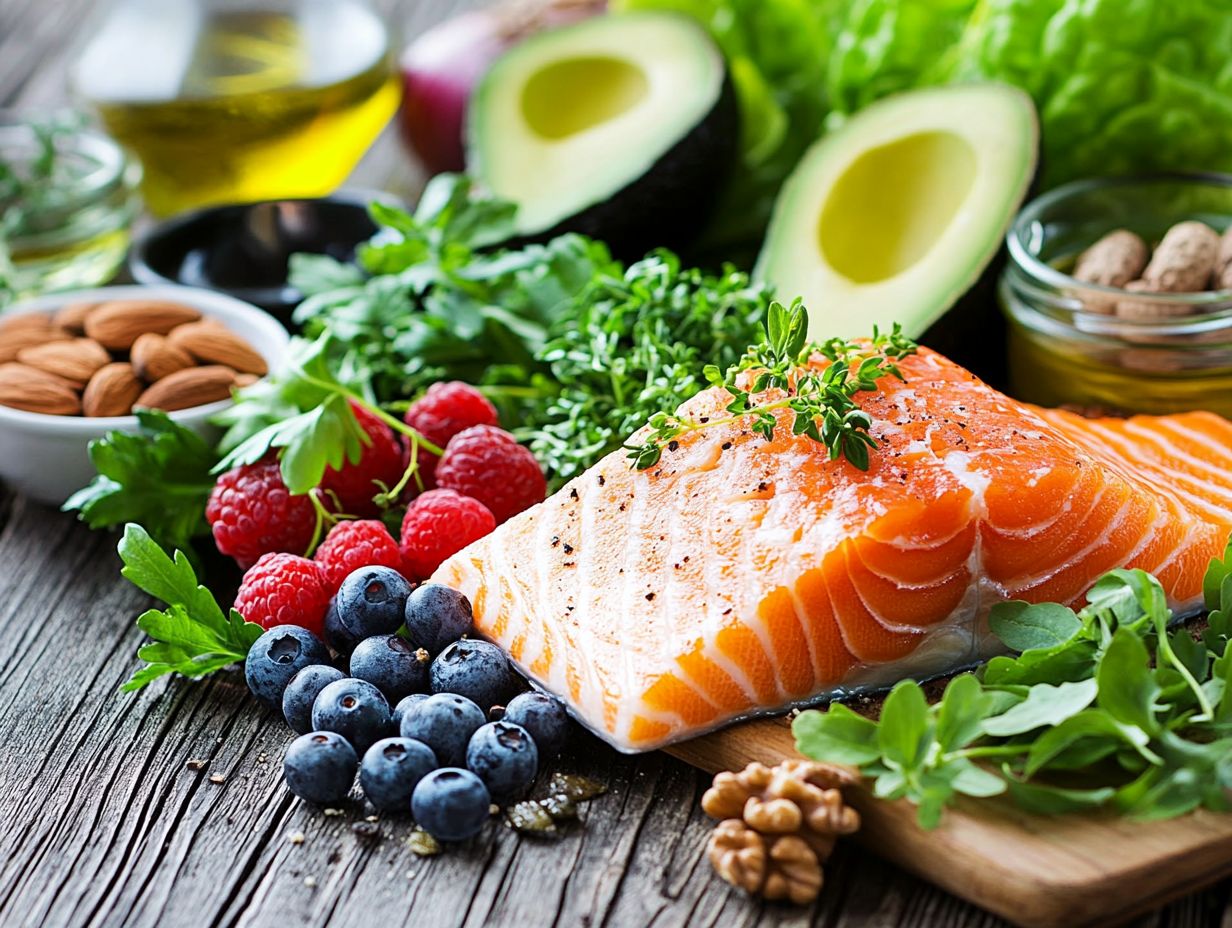
Embarking on the journey of trying new recipes can truly invigorate your ketogenic diet. This approach not only introduces diverse flavors but also ensures that you adhere to high food quality while incorporating permitted foods that enhance your overall health benefits.
By experimenting with dishes that showcase fresh, high-quality ingredients, you can enjoy a delightful culinary adventure while remaining aligned with your dietary goals. For example, dishes like creamy cauliflower mash or zesty avocado chicken salad can transform your meals into something exciting and pleasurable.
Treat yourself to an exciting twist on a classic with keto-friendly pizza featuring an almond flour crust! It not only satisfies those cravings but also delivers essential nutrients.
As you explore various recipes, you might discover a love for cooking. This can enhance your daily meals and support a sustainable ketogenic lifestyle.
Frequently Asked Questions
What is the keto diet and how does it relate to food quality?
The keto diet is a high-fat, moderate-protein, and low-carbohydrate diet that shifts the body into a metabolic state called ketosis, where your body burns fat for energy instead of carbohydrates. Quality foods on the keto diet are important as they provide essential nutrients and help maintain the state of ketosis.
What are some examples of high-quality food on the keto diet?
High-quality foods on the keto diet include fatty fish, avocados, nuts and seeds, grass-fed meats, and low-carb vegetables such as leafy greens and cruciferous vegetables.
How can I ensure I am choosing high-quality foods on the keto diet?
When shopping for keto-friendly foods, look for whole, unprocessed options and read labels to check for added sugars and carbohydrates. Opt for organic, grass-fed, and pasture-raised options whenever possible.
Can I still eat processed foods on the keto diet?
Processed foods are not recommended on the keto diet as they often contain added sugars, unhealthy fats, and other additives that can hinder weight loss and overall health. It is best to stick to whole, unprocessed foods for optimal results.
Are there any foods that should be avoided on the keto diet?
Yes, there are certain foods that should be avoided on the keto diet, including high-carbohydrate foods such as grains, starchy vegetables, and sugary fruits. It is also recommended to limit or avoid processed meats and unhealthy fats.
Can I still eat out while following the keto diet and maintaining food quality?
Yes, it is possible to eat out while following the keto diet, but it may require some research and modifications. Look for restaurants that offer keto-friendly options or choose dishes that are primarily made with high-quality, low-carb ingredients.
Get started on your culinary adventure today and unlock the delicious world of keto cooking!

